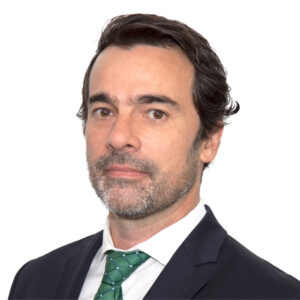What challenge(s) do our clients face?
Forces such as digitization and globalization are driving a wave of innovation that presents both opportunities and challenges for education providers.
Historically, the education sector has been more traditional and with a low degree of innovation. Indeed, the way we teach classes and provide educational material in some cases has been the same for decades. However, the sector has been undergoing a strong movement of transformation, digitilization and globalization in recent years, presenting challenges and opportunities for organizations.
Within the sector there are distinct challenges between the more traditional and regulated qualification such as Basic and Higher education, and non-regulated qualification such as Open Courses; and the movement of innovation and disruption is manifested in different ways when looking at these three worlds.
REGULATED QUALIFICATION – BASIC EDUCATION:
In basic education, legislation tends to be strict on the duration and scope of courses, defining minimum curricular matrices that must be followed. Even so, there is room to innovate, especially in changing the learning channels, and by adding new services, for example through:
- Online platforms – that can be used just as complementary support, or to provide a semi distance or a 100% online course.
- Digital educational material – intelligent systems(AI) to administer homework and tests, and a more dynamic way of learning that enables self-selection.
- New educational apps and tools – that can help students connect and collaborate with other students, professors and even alumni
- Homeschooling – depending on the regulation of each country.
- Services bundle – offering complementary services to the standard grade of the student, such as language classes, sports, among others
- Teaching models – creation of teaching models from national reference institutions to serve smaller schools, guaranteeing quality and efficiency standards, reducing work with the development of pedagogical content, and leaving the school 100% focused on attracting students and in the execution of teaching.
REGULATED QUALIFICATION – HIGHER EDUCATION
In the private higher education sector by contrast, the first major challenge is related to changes in the labor market. The labor market has increasingly demanded practical, specific, and applicable on-the-job knowledge. As a result, large companies have increasingly required fewer academic degrees to hire professionals, thus arising the challenge for Higher Education of how to attract new students to traditional courses.
Another major challenge is student retention. Unlike basic education, where students are required to be enrolled in an educational institution by law, in higher education, students can drop out of the course or educational institution whenever they want, which makes evasion a relevant variable to be considered. In addition, the globalization of higher education has made it possible for students to study at any university in the world.
In this context, the sector has been going through several challenges, with a focus on becoming more and more customer-centric, with the challenge of adding value to the student throughout his academic journey and at the same time in the pursuit of efficiency.
From the strategic and management point of view, the following challenges stand out:
- Adjustments to traditional products – creating courses with shorter duration and increasingly connected to practice, with modular options according to the student’s interest.
- New products and platforms: the emergence of marketplace platforms for continuing education courses, where there is less regulation.
- Learning channel – development of distance learning, through teaching platforms, as a replacement or complement to the purely in-person teaching model.
- Business model – developing new models for attracting students, complementing the traditional model of face-to-face enrollment with new formats such as online and free-trial funding.
- Charging – traditional monthly or annual fee model is beginning to be challenged with pay-per-use and subscription models, mainly on platform models.
- Financing – new financing models, such as Income Share Agreements and Crowdfundings join the government and private financing.
- Service models – instead of the student relying only on face-to-face service, new service formats are emerging, such as call-center, self-service, and the use of BOT’s to solve traditional secretarial and financial problems with more efficiency and quality.
- OPM’s (Online Program Manager) – players who provide the digital platform and/or support services for distance learning so that traditional institutions can offer their course/product.
OPEN COURSES
The open course segment, in contrast, has been taking advantage of the increased demand in the labor market for practical, specific, and applicable knowledge to develop services that are increasingly customized to the student’s needs, through different digital channels and platforms.
As the main challenges and changes in the segment, we see:
- Product changes: the creation of different products that mix learning with a teacher, group experience with classmates, and even self-learning where the student alone learns directly with the platform.
- Breaking down geographical barriers: the expansion of the distance learning model has made it possible to sell free courses to any city and even to any country, quickly allowing a local player to become global.
- Increased relevance of the marketplace: the emergence of specialized marketplace platforms according to the student’s interest.
- Funding: increasingly directed at the target audience of students, reducing the cost of wider fundraising.
- Retention: development of predictive models to ensure a better experience and greater student retention.
- Billing and financing: new monthly fee and financing models, are beginning to be challenged with pay-per-use, subscription, Income Share Agreements, and Crowdfunding models that join traditional models.
How do we help?
Our experience along the value chain in different markets allows us to address these challenges with a focus on the student and an appreciation for your context and regulatory environment.
Considering the challenges at each stage of the chain, and the accelerated pace of change we are experiencing, it is easy to see why understanding your specific context in depth is critical to developing an effective solution.
In our work we aim to bring together technical methodologies (such as Go-to-Market design, Digital Transformation, Customer Segmentation, Strategic Sourcing etc.) with a hands-on, practical approach to drive informed decision-making and deliver transformational change.
In recent years we have helped the education providers as described above address broad and multifacted challenges such as:
- How to maximize Life Time Value (LTV) throughout the student’s journey?
- Building together a holistic and end-to-end view of the journey (from enrollment to graduation) and identifying how to improve the contact points throughout that journey to impact LTV based on the student performance profile.
- How to seek growth with efficiency and standardization in student service, connecting the physical world with the digital?
- Identifying which services can be centralized, automated, or changed to a self-service model, with a focus on improving the service provided and gaining efficiency.
You can find out more about the many other solutions we have provided with our cases below; but please also contact us to find out more!
Clients
We have worked with clients in different categories, geographies and positions along the value chain:
SUCCESS STORIES
CHALLENGE
One of the biggest universities in Brazil (by number of students), had a historically strong position in the undergraduate market, however was struggling to gain space in postgraduate and open courses.
Postgraduate courses represented less than 2% of revenue, and open courses had declined consistently over recent years. The organization asked for Integration’s support to define growth initiatives which would improve the university’s position in existing markets, and identify new markets to enter.
APPROACH
We identified 13 growth initiatives across three key pillars:
- Review of course portfolio and perceived quality of product, leveraging market experts
- Assessment of value add along the student journey, and gaps vs. market
- Go-To-Market strategy
- Organizational structure to enable required postgraduate service level
RESULT
The 13 initiatives mapped delivered growth potential 4x the size of the current business.
The organization was redesigned across all levels, gaining significant efficiencies through the correction of bottleneck areas, such as IT.
CHALLENGE
Our client, a public University in Brazil, was looking to define a new model that would reduce the complexity and high cost of operating a face-to-face service for students (e.g. for registration, financial affairs, scholarships), without damaging service level.
APPROACH
Based on the student journey, we segmented the services provided based on the level of human interaction needed, and the criticality of the service for the student.
Based on a market scan and cross-industry references, we asessed opportunities for centralization and automation services through new technologies such as BOTs, online self-service tools, AI and predictive analytics technologies to define the future model.
Working together with the client’s team, we prepared an implementation roadmap to support execution and ensure a seamless transition to the new way of working.
RESULT
The project was implemented with an improvement in the NPS, strong engagement of the university’s campus, and delivered a 50% reduction in service costs.
CHALLENGE
A private university in Brazil was suffering from tuition evasion and default among undergraduate students, and asked for Integration’s support in defining a new collection model.
APPROACH
We began with a market scan of potential revenue models – considering global benchmarks in education and other industries, asessing variations of traditional models, pay-per-use, and subscription. We defined a bespoke model for the university based on best practice, and simulated the financial impact on the students’ lifetime value throughout the course. Pilot units were selected to test the new model before the complete roll-out.
RESULT
The new model proposed has the potential to increase the cash generation of the company by 2%, and increase retantion KPIs.
CHALLENGE
After the merger of two large private education companies in Brazil, one focused on basic education and other on higher education, Integration was asked to support the identification of potential synergies.
APPROACH
Our focus was on the purchasing area, renegotiating purchasing categories (through the implementation of strategic sourcing), and designing the integrated model for the purchasing function across both companies.
There were 15 categories identified in which a renegotation was possible (with different scopes of activity), including; health plan, real estate, third-party it services, and transport. Based on potential reduction gains, we prioritized categories and worked together with the client team to size the opportunities and prepare and execute the negotiation.
RESULT
The estimated potential saving from renegotiation was ~3%, with at least 1.7% captured during the project.
We designed and implemented a new integrated structure for the purchasing area, and prepared a 1.5 year supply area roadmap to support the client to continue to drive efficiency after our exit.


